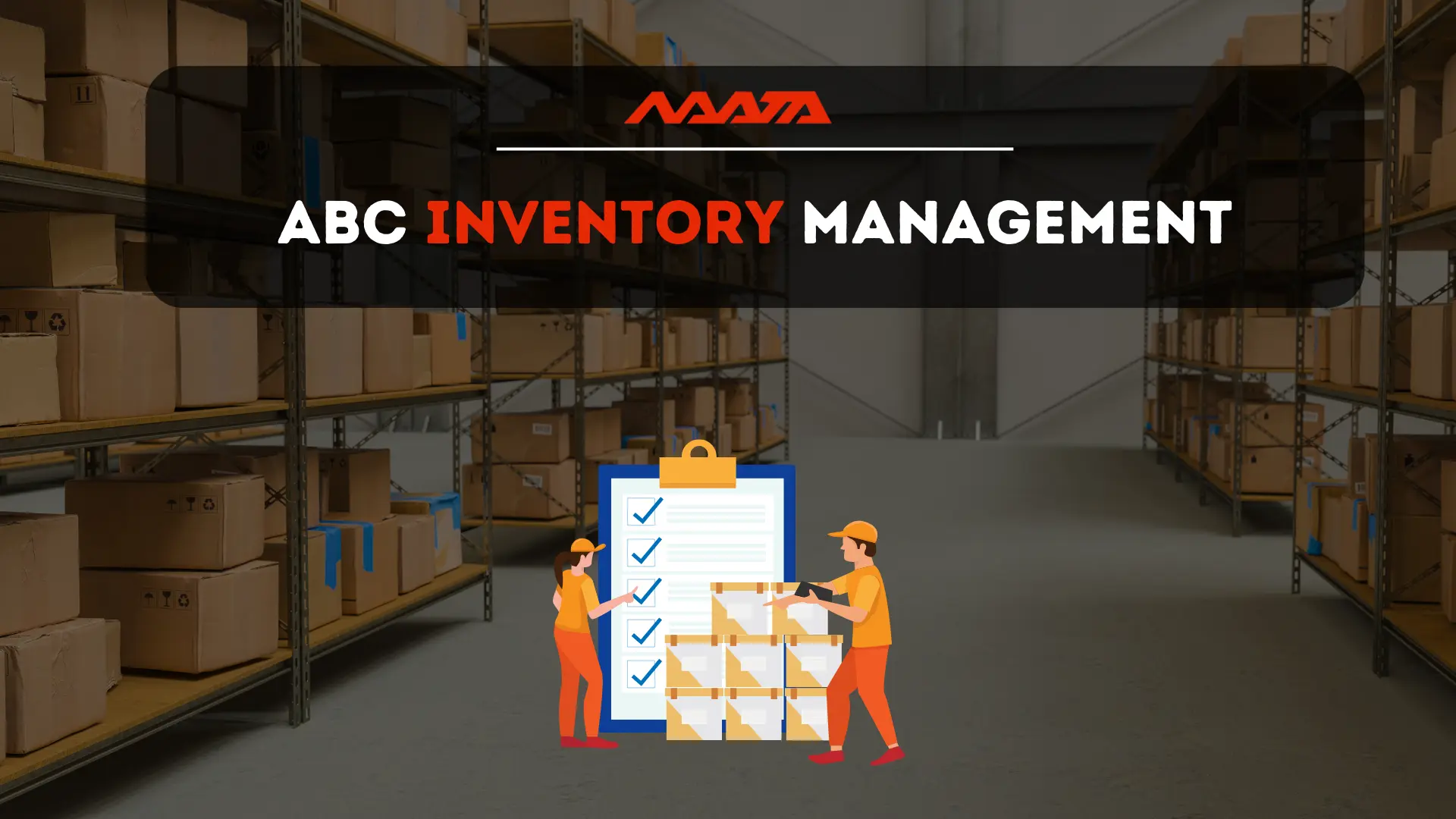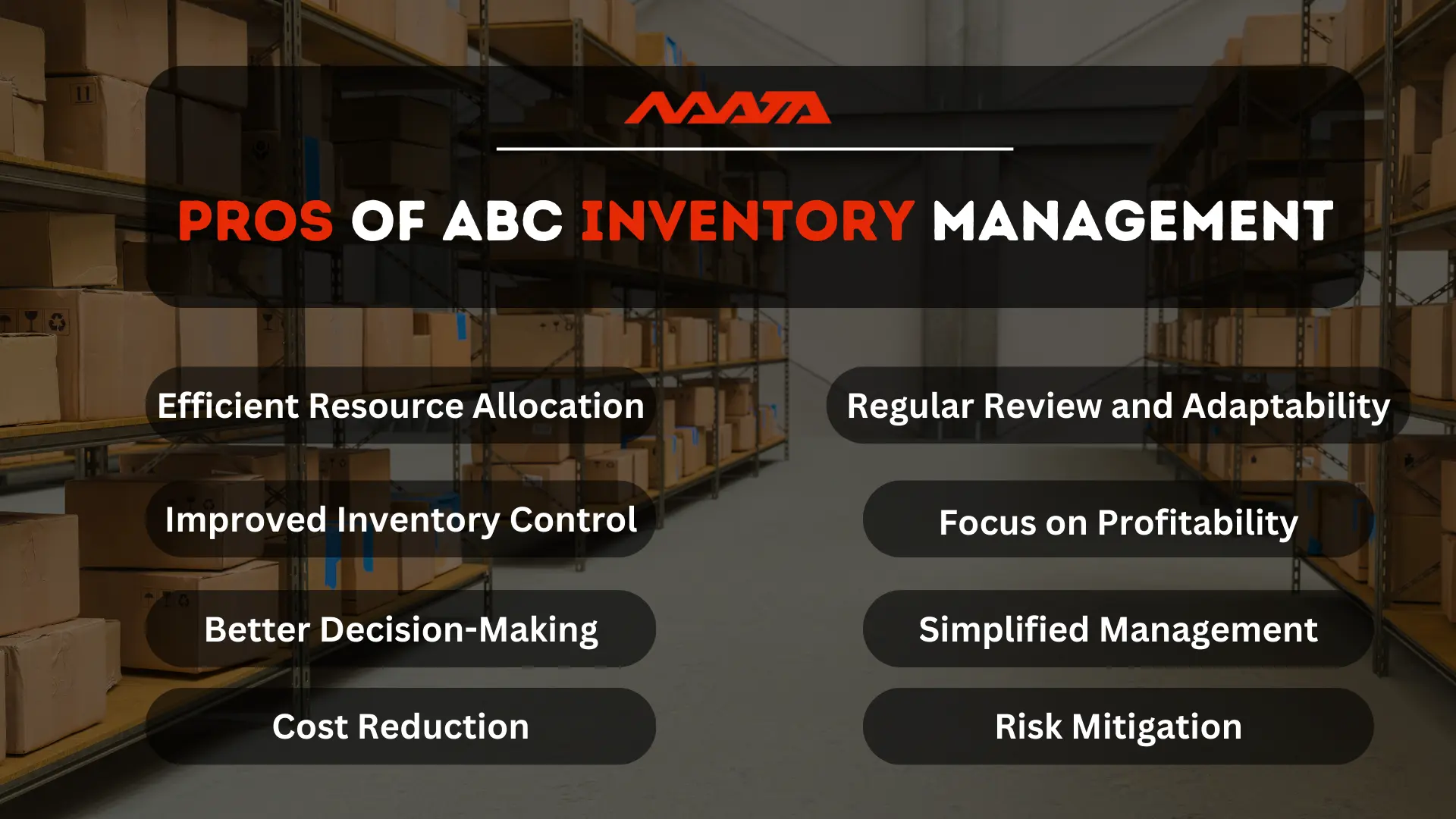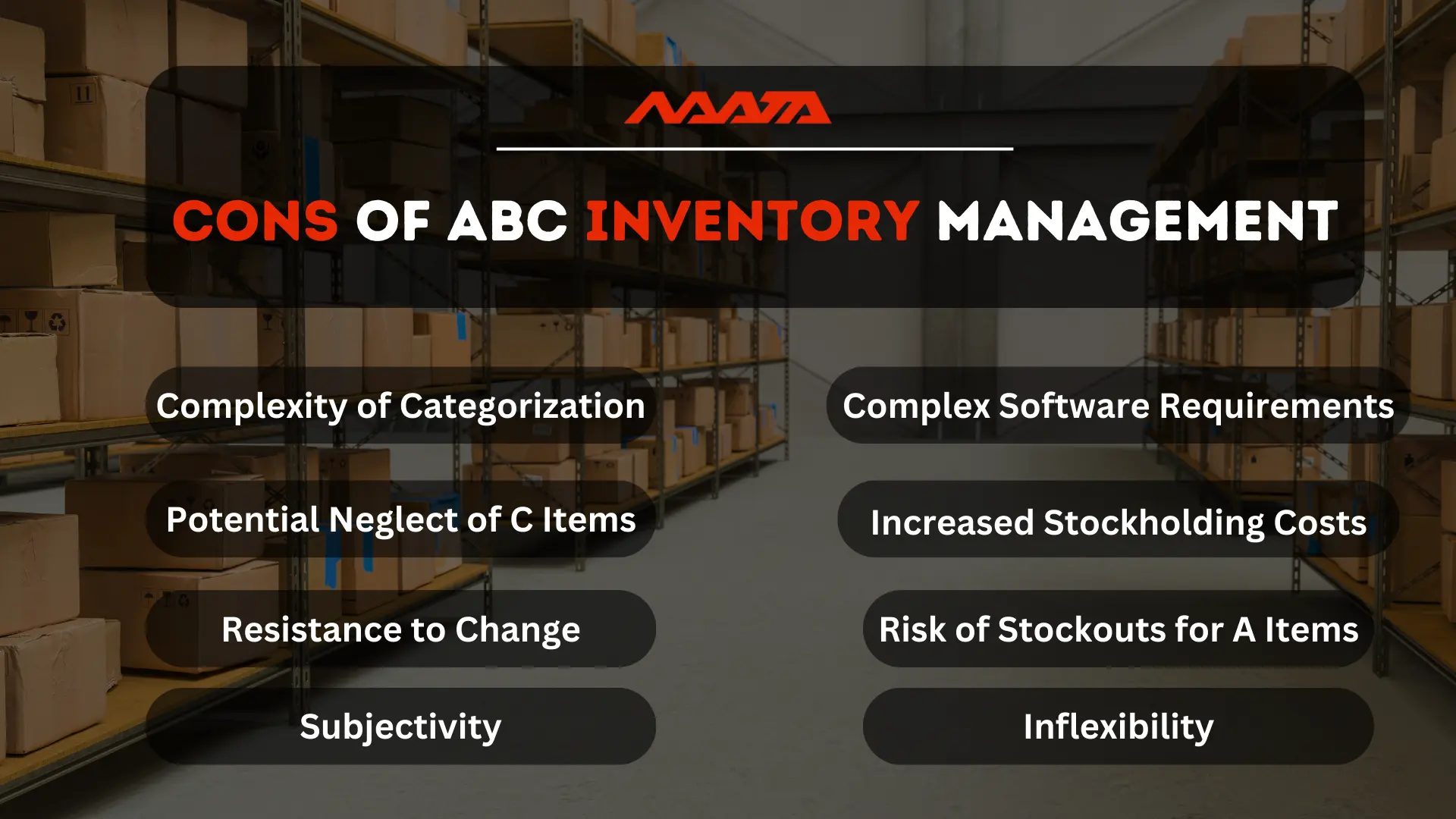
ABC Inventory Management: Definition, Pros & Cons
Table of Contents
ABC Inventory Management
ABC inventory management, also known as ABC analysis or ABC classification, is a strategy used in supply chain management and inventory control to categorize things into three groups depending on their importance and value to an organization. These are the groups:
- A Items: These are the most valuable and essential items in the inventory. They typically represent a relatively small percentage of the total number of items but account for a significant portion of the entire inventory value. Managing A items is crucial as they have a high impact on the company’s profitability.
- B Items: These items are of moderate importance. They are more numerous than A items but less numerous than C items. B items have a moderate impact on the overall inventory value and profitability. They require a reasonable level of attention and control.
- C Items: These are the least essential items in the inventory. They are numerous and represent a relatively small percentage of the total inventory value. C items have the lowest impact on the company’s profitability and are often less critical to manage in detail.
The purpose of ABC inventory management is to help organizations allocate resources, time, and attention more effectively based on the relative importance of different items in their inventory. By categorizing items into A, B, and C categories, businesses can focus their efforts on the most critical items while allocating fewer resources to less important items. This approach allows for better inventory control, cost reduction, and improved overall efficiency.

You Might Also Like To Read: Inventory Management Techniques: 5 Effective Methods
How ABC Inventory Management Works
ABC inventory management categorizes items in a company’s inventory into three distinct groups (A, B, and C) based on specific criteria. The goal is to prioritize and manage items more effectively according to their importance and value to the business. Here’s how ABC inventory management works:
How to calculate ABC classification?
Data Collection
Gather data about each item in the inventory. The data can include factors such as the item’s usage, annual sales value, cost, profit margin, and other relevant metrics.
Criteria Selection
Determine the criteria by which items will be classified into the A, B, and C categories. The most common standards are:
- Annual Sales Value: Items with the highest sales value are typically categorized as A items.
- Usage Frequency: Items with the highest usage or demand are often designated as A items.
- Profit Margin: High-profit margin items may also be classified as A items.
- Other relevant factors are based on the specific needs of the business.
Categorization
Sort and classify each item in the inventory based on the chosen criteria. For example, if the criteria are annual sales value, you might categorize the top 20% of items as A items, the next 30% as B items, and the remaining 50% as C items.
Inventory Management Strategies
Implement different inventory management strategies for each category:
- A Items: These are the most critical items, so they typically require tighter control and more frequent monitoring. Companies often maintain more significant safety stock levels for A items to ensure they’re readily available when needed.
- B Items: These are moderately important so they may require a moderate level of control and monitoring. Inventory policies for B items are typically less strict than for A items.
- C Items: These are the least important items and require the least attention. Inventory levels for C items are usually kept to a minimum, and they may be ordered less frequently.
Regular Review
Periodically review and update the categorization of items. As market conditions change, item performance fluctuates, or business priorities evolve, items may need to be reclassified.
You Might Also Like To Read: Just In Time Inventory – Definition, Pros & Cons of JIT

Pros OF ABC Inventory Management
ABC (Always Better Control) inventory management offers several advantages for businesses that adopt this approach. Some of the key benefits and pros of ABC inventory management include:
Efficient Resource Allocation
ABC analysis allows for the efficient allocation of resources, time, and effort. By categorizing items based on their importance and value, companies can focus their attention and resources on the most critical items (A items) and allocate fewer resources to less important items (B and C items).
Cost Reduction
One of the primary advantages of ABC inventory management is cost reduction. Businesses can optimize inventory levels for each category. A items, being the most critical, might warrant higher safety stock levels, while C items may be kept at minimal levels. This leads to reduced carrying costs, lower storage expenses, and decreased capital tied up in inventory.
Improved Inventory Control
ABC analysis enhances control over inventory. By closely monitoring A items and implementing tighter controls, companies can reduce the likelihood of stockouts and better meet customer demand. Simultaneously, the approach helps minimize overstocking of less important items.
Better Decision-Making
ABC categorization provides valuable data for informed decision-making. It helps in determining reorder points, reorder quantities, and stocking levels. This data-driven decision-making improves the accuracy of inventory management and can lead to increased profitability.
Focus on Profitability
ABC inventory management emphasizes the importance of profit. A items, which represent the most profitable items, receive special attention and are managed to maximize returns. This can positively impact the company’s bottom line.
Risk Mitigation
By closely monitoring and managing A items, a business can mitigate the risks associated with running out of stock for critical, high-demand products. This helps maintain customer satisfaction and prevents potential lost sales.
Simplified Management
Categorizing items into three groups simplifies inventory management. It streamlines the process by allowing managers to apply distinct strategies for each category rather than treating all items equally.
Regular Review and Adaptability
ABC analysis is not static. It encourages regular reviews of inventory categorization, which helps the system adapt to changing business conditions, shifts in customer demand, or fluctuations in market conditions.
Inventory Transparency
The categorization process increases the transparency of inventory. It allows managers and stakeholders to easily identify which items have the most significant impact on the business’s overall performance.
Customer Satisfaction
By ensuring that high-demand or high-profit items (A items) are well-stocked, businesses can improve customer satisfaction and loyalty.
You Might Also Like To Read: Economic Order Quantity (EOQ): Definition, Pros & Cons

Cons of ABC Inventory Management
ABC (Always Better Control) inventory management has several advantages, as previously mentioned, but it also comes with some potential drawbacks and cons that businesses should consider when implementing this approach:
Complexity of Categorization
The process of categorizing items into A, B, and C groups can be complex and time-consuming. Determining the criteria for categorization and regularly reviewing the classifications can require significant effort.
Subjectivity
The choice of criteria and the categorization process can be somewhat subjective. Different individuals or teams within the organization may have varying opinions on how to classify items, which could lead to inconsistencies.
Potential Neglect of C Items
While the focus is often on A items, there is a risk of neglecting C items. These items, though individually less valuable, can collectively represent a significant portion of inventory costs. Ignoring them completely could lead to inefficiencies.
Inflexibility
The categories created by ABC analysis are only sometimes adaptable to rapidly changing market conditions. A category can quickly change due to shifts in demand or market dynamics, and businesses need to be prepared to adjust their strategies accordingly.
Overemphasis on Annual Sales or Cost
ABC analysis often relies on factors like annual sales value or cost to categorize items. This can overlook the long-term strategic importance of certain items, such as products with high potential growth in the future.
Risk of Stockouts for A Items
While the goal is to maintain adequate inventory levels for A items, there is a risk of overstocking, which can tie up capital and lead to obsolescence. Balancing this risk is crucial.
Complex Software Requirements
Implementing and maintaining ABC inventory management often requires specialized inventory management software to track and analyze data effectively. This can be costly and may require staff training.
Increased Administrative Overhead
Regularly reviewing and updating the categorization of items and managing inventory levels according to the ABC approach can result in increased administrative overhead.
Potential for Oversimplification
Simplifying inventory management by grouping items into just three categories can lead to the oversimplification of a complex inventory system. In some cases, businesses may need more nuanced categorization.
Resistance to Change
Employees and management may resist changes to existing inventory management practices, especially if they have been in place for a long time. Implementing ABC analysis may require a cultural shift within the organization.
Difficulty in Non-Retail or Non-Manufacturing Settings
ABC analysis is most commonly associated with retail and manufacturing. It may be less applicable or practical in other industries where inventory management is less straightforward.
Increased Stockholding Costs
While ABC analysis can reduce carrying costs for C items, it may increase stockholding costs for A items due to the maintenance of higher safety stock levels.
Thanks For Reading: ABC Inventory Management: Definition, Pros & Cons



